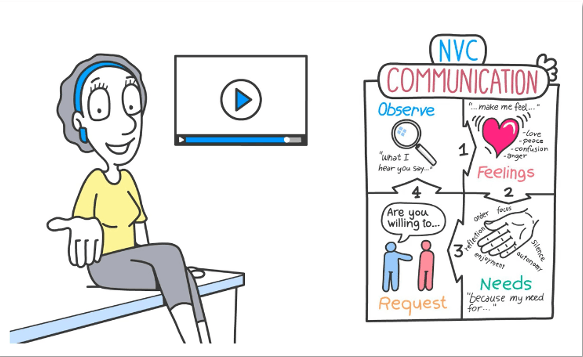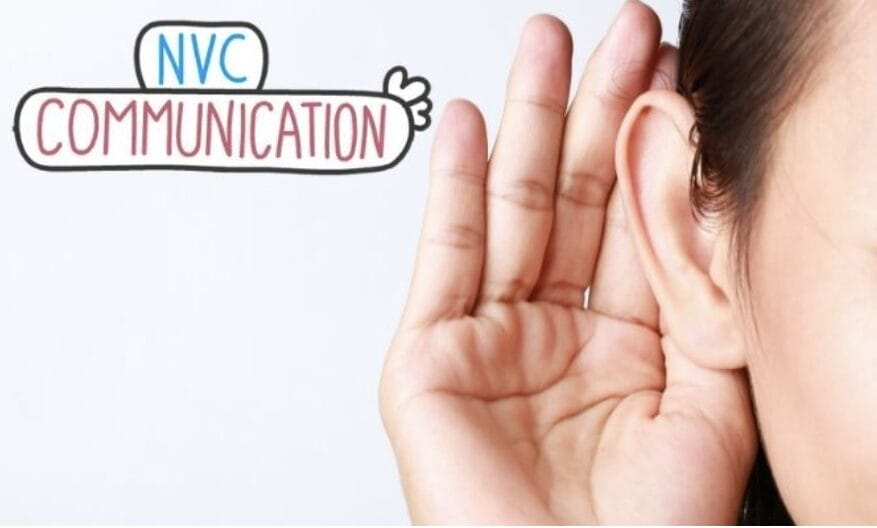I’ve reached a point in my Nonviolent Communication, NVC, development where I understand its basic structure, but I still find it difficult to apply.
When can I use Nonviolent Communication? Do you have to do it perfectly?
Nonviolent Communication is an attitude or approach. For instance, if I approach a discussion with the intent to listen, be present, and try to understand the other person’s feelings and needs, then I use Nonviolent Communication!
Yesterday, I had a call with a friend. She has worked as a teacher for many years. The job can be very tough, and she has given it everything she has. Yesterday, she told me how she had had enough. It was not fun anymore, and she wanted to quit. She talked about how badly teachers are treated and her frustration over the lack of respect from students.
She also told me that all her friends tried to “fix” her, tried to find a “solution”, and how tired she was of people that didn’t listen.
To be fair, I also said something that was interpreted as an attempt to “fix.” When I excused myself and said that it was meant to be interpreted that way, she got irritated with me, too.
She said: Why do people always assume that the interpretation is wrong? Why do people not take responsibility for what they are saying?
She had a point! And I quickly retracted and said she was right. Next time, I’ll not say that “what I said was misinterpreted/misunderstood.” Instead, I’ll say something like: “Sometimes, I’m unclear with the things I say. Let me rephrase it to see if I’m clearer.”
This is practical, Nonviolent Communication! Focus on what you and I can do, instead of trying to find fault in the other person. If we’re afraid the other person has misunderstood us, let’s ask them to see what they heard us say. If it wasn’t what we intended, let’s give it another try.
The conversation continued, and she continued telling me about her frustration with her work situation. After about 10 minutes I did something I’d never done before. I asked her what she wanted me to do or say. You’ve told me you don’t want any “fixes”.
WOW, this was so Nonviolent Communication-ish! Do you know what happened?
She said she just needed to talk about it. She needed someone to listen to her and empathize with her feelings. (Yes, she used the word empathy)
She used a funny word in a sentence sometime later in the call. I made the mistake of interrupting and asking about that word. Yes, I understand now that it was a mistake. My interruption led to a 5-6 min monologue about how frustrating it is when people focus on the wrong things. That word (which I don’t remember anymore) had nothing to do with the story’s point.
At that time, I can honestly say that I felt a little frustrated. I tried my best to listen to her, but she lashed out at me when I interrupted. I defended myself by saying that I liked these kinds of words. But it didn’t make any difference.
Today, I’d like to guess what happened. The attention was on her when we were talking, but my question broke the spell. It moved the focus from her to me. She needed to be heard in that situation, and suddenly, she didn’t meet that need. As a result, she got irritated.
How can both our needs be met in this situation?
Next time I hear a funny word, I’ll write it down instead of interrupting. I’m sure she wouldn’t mind explaining the word after she has finished her story when I tell her how much I like these funny words. This way, both our needs can be met!
Learning about Nonviolent Communication can be frustrating, but once we gain a small understanding of what happens around us, it’s truly amazing!
This post is part of our Nonviolent Communication Video Course. Here is a link to the Course page if you want to learn more. Don’t miss the opportunity to truly learn Nonviolent communication. It can help you in so many areas of your life.

 English
English Español
Español Français
Français Português
Português Svenska
Svenska